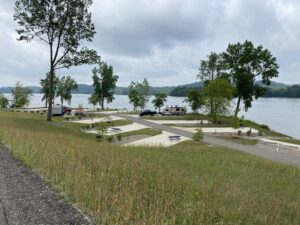
INDUSTRY TRENDS
$1 Trillion in Infrastructure? Go Fish.
September 5, 2017 | WRITTEN BY: Shannon
Written By: Betsy Ehler, Director of Community Initiatives

If you are a city, county or other form of local government challenged by the complexity of federal grant programs (and whether they are even still available to you), you are not alone. In the game of funding, it has become a bit like the old-fashioned kid’s card game, “Go Fish.”
“Do you have any TIGER grants? No? Go Fish.”
“How about Great Lakes Restoration Initiative Funding? No? Go Fish.”
“Any U.S. EPA Brownfields Grant Funding? Maybe? Go Fish.”
Since the new administration took office, the game has become even more challenging. Cards you thought were there are not. New cards may be there, but unseen. Of late, the magic card that everyone is hoping to turn over from the middle of the deck is worth $1 trillion.
Over the next 10 years the president has planned to leverage $1 trillion for infrastructure including bridges, roads, waterways, energy and other projects. And while there are lots of questions, (will there be a formal application? How big a role will private investment play? What exactly is a “transformative” project?), there are not many answers. But a lot has happened. Here is what we know so far…

In February 2017, a list was leaked titled, “Emergency and National Security Projects of president-elect Trump.” It referenced 50 ‘initial’ projects tallying over $130 billion with 50 percent private investment. The list included three Ohio projects:
- The Brent Spence Bridge (Cincinnati) – Cost: $2.5 billion;
- The National Research Lab for Infrastructure, a new R&D center to develop and commercialize infrastructure technology of the future (Columbus) – Cost: $2 billion;
- Project Clean Lake, for Northeast Ohio Regional Sewer District (Cleveland), including seven new water tunnels to provide relief to Cleveland’s antiquated system – Cost: $3 billion
In June 2017, The White House held a summit on rebuilding the nation’s infrastructure. A Bloomberg article detailed Trump’s program would have opportunities for:
- Transformative projects;
- Grants to rural areas;
- Enhanced loan programs;
- Incentive programs to states and municipalities.
In July 2017, an executive order establishing the president’s advisory council on Infrastructure was signed. A newly created council of 15 members would have a big mission. Per the Order, in pursuing its mission, the council may make recommendations on:
- Prioritizing the Nation’s infrastructure needs;
- Accelerating pre-construction approval processes;
- Developing funding and financing options capable of generating new infrastructure investment over the next 10 years;
- Identifying methods to increase public-private partnerships for infrastructure projects, including appropriate statutory or regulatory changes;
- Identifying best practices in and opportunities to improve procurement methods, grant procedures and infrastructure delivery systems;
- Promoting advanced manufacturing and infrastructure-related technological innovation.
A week later, a lawsuit surfaced alleging that the council was convened illegally, in violation of federal disclosure law. As of August 17, the president has disbanded the council.
In August 2017, President Trump signed an executive order to eliminate and streamline federal regulations impairing construction of U.S. roads and bridges. The plan to make an easier process was provided in some detail, but the funding portion, still elusive.
Back to that game of “Go Fish.”

In the buildup for what may or may not be, perhaps the most important card to play is the, “be prepared for anything” card. Here are a few suggestions for what you can do now to line up your project for future success:
- Get your partners in order, big and small, and have their commitments penned into support, financial or otherwise.
- Look for private matching funds and solidify a few private partnerships as part of your proforma.
- Find creative ways to define how your project may be truly transformative to your community and beyond. Understand how your project fits into the state’s goals and priorities.
- Make sure your SAM number and grants.gov passwords and logins are up-to-date. Be ready to load if something does become available.
- Ask people about funding cards that you may need – or dig for any news about new or rumored grant programs.
- Define your project in phases, and have your cost-estimates ready for various phases, beyond your original plan to show readiness.
- Embrace technology – the future is coming and it will touch infrastructure – in terms of automation, connectivity and innovation.
- Make friends fast with people who know their way around incentives and public/private finance for projects.
- Build your own preliminary Benefit Cost Analysis (BCA) for your project, and identify firms and resources who excel in successful BCAs.
- Market your project to state and congressional senators and representatives, so if there is a real list, you stand a chance of being on it, or at least connected to it.

Betsy Ehler is a grant writer with Environmental Design Group based in Columbus, Ohio who has authored and implemented over $30 million in grants and has over 20 years of experience in creatively funding projects with communities.
RELATED TAGS:
[xyz-ips snippet=”comment-form”]




